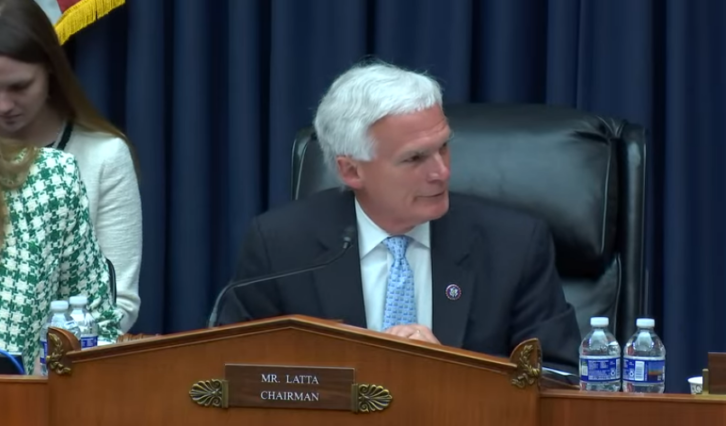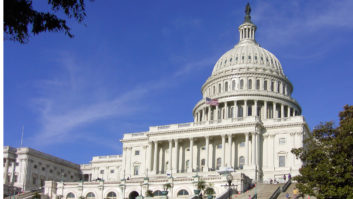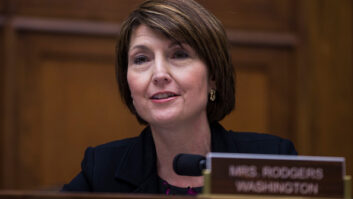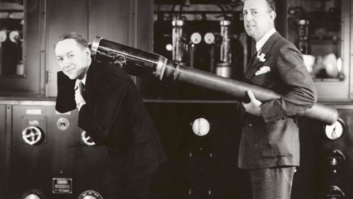The future of AM radio in vehicles was the talk of the town on Capitol Hill Tuesday.
On June 6, the Energy and Commerce Committee and its Communications and Technology Subcommittee held an “educational” hearing on the merit of AM radio, and for select witnesses to field questions. The hearing, titled “Listen Here: Why Americans Value AM Radio,” was open to the public via a livestream.
Ohio Rep. Bob Latta, the Republican chair of the subcommittee, opened the hearing and oversaw the proceedings. “We must ensure that no communities are left behind, no voice is silenced and no emergency communications are compromised,” he said, speaking in favor of new bipartisan legislation that would require automakers to maintain AM broadcast radio in their new vehicles at no additional charge.

The proposed “AM Radio for Every Vehicle Act” says AM should be clearly visible on the vehicle’s dashboard; and, until the new standard would take effect, cars lacking AM radio receivers would have to be labeled as such for buyers. The bill would also direct the Government Accountability Office to study whether alternative communication systems could fully replicate the reach and effectiveness of AM broadcast radio for alerting the public to emergencies.
For nearly three hours on June 6, legislators shared personal statements and directed questions towards three gathered witnesses: Scott Schmidt, vice president of the Alliance for Automotive Innovation; Jay Chapman, owner/president of Woof Boom Radio; and Lt. Colonel Christopher DeMaise, the assistant deputy director at the Office of Emergency Management/New Jersey State Police.
In his remarks advocating for AM radio, and calling on his years as an emergency responder, DeMaise said, “AM radio fills the need for redundancy as a backup for other communication methods.” He said this requirement for redundancy is a basic tenet in emergency management.
Adding on to DeMaise’s remarks, Woof Boom Radio’s Chapman said, “The vast majority of Primary Entry Points (or PEP stations), which comprise the EAS, are AM radio stations and this is because an AM station can cover a vast area, some as much as 700 miles, and AM also travels better through solid objects like mountains.”
Throughout the hearing, multiple pointed questions were directed towards the third witness, Scott Schmidt, who was acting as the representative for automaker interests.
In his initial remarks, Schmidt said, “Vehicles today offer a host of options for consumers to receive critical emergency alerts.” He said available platforms for alerts stretch far beyond AM radio.
One question posed to Schmidt was “how much does it cost to include an AM radio in electric vehicles?” Another question from the gathered representatives begged explicit details on how AM would interfere with EVs (if at all). Schmidt acknowledged that he did not have the information or specifics to answer those questions. He did, however, say that the alliance and its members are “committed to providing free alerts and safety warnings through the IPAWS system.”
On May 24, following weeks of backlash from broadcasters, emergency management officials and legislators, Ford Motor Company announced that it had reversed its decision to remove AM radio from future vehicles in the U.S. and will now include the technology in its newer model cars. We learned of Ford’s intentions to remove the senior band from most of its new vehicles, not just the electric ones, in March.
“After speaking with policy leaders about the importance of AM broadcast radio as a part of the emergency alert system, we’ve decided to include it on all 2024 Ford and Lincoln vehicles,” said Ford CEO Jim Farley in a post on social media. “For any owners of Ford EVs without AM broadcast capability, we’ll offer a software update.”
Ford’s decision to keep AM in its 2024 vehicles was frequently highlighted with approval during the hearing — unsurprising, considering the hearing was not short on voices. Chair Latta managed five-minute windows for numerous representatives to share their thoughts; here is a sample:
Florida Rep. Neal Dunn, a Republican, said: “There are 82 million Americans listening to AM radio and only 2 million Americans driving electric vehicles. I’ll leave it there.”
Michigan Rep. Debbie Dingell, a Democrat, said: “Consumers should not bear the cost of receiving lifesaving emergency information. Period.”
Texas Rep. August Pfluger, a Republican, said: “I’m not a pro-mandate kind of person, but I am very concerned about the potential removal of AM from vehicles. AM radio is a national security issue.”
Not everyone, however, is viewing the proposed legislation with rose-colored glasses. In a recent blog post, the Consumer Technology Association called the mandatory AM bill “nonsensical,” and said “mandating AM radio in new cars would be like mandating CD or 8-track cassette players.”
[Related: “What People Are Saying About Ford, Its Decision to Keep AM“]
A day prior to this hearing, a collective of emergency management organizations sent a letter to congressional leaders in support of the “AM Radio for Every Vehicle Act,” citing the senior band’s critical role in disseminating vital information during emergencies.
“Unlike other services, AM broadcasts are unique in terms of their resiliency and reach, including to areas that may not be served fully, if at all, by cell and/or broadband service,” read the letter.
Earlier this month, state broadcast associations from all 50 states, D.C. and Puerto Rico passed a resolution in support of the “AM Radio for Every Vehicle Act” in Congress.
The resolution provides a roundup of all the reasons that have been cited by AM supporters for keeping AM in cars including the reach of AM signals; the still-significant number of listeners; AM’s role in EAS; the investment by FEMA in hardening PEP facilities for use in worst-case national crises; the reliability of AM compared to wireless and internet services during power losses; and the role of AM in serving minority, non-English-speaking and other underrepresented communities.
While the prevalence of AM radio is the hot topic on Capitol Hill today, rural broadcasters have long expressed their support for the senior band, not just for its emergency capabilities, but also for the daily role the service plays in the agricultural industry — a fact that was also touched on during the hearing.







